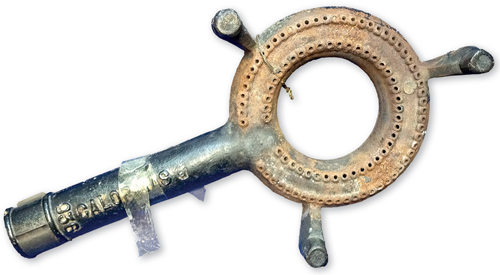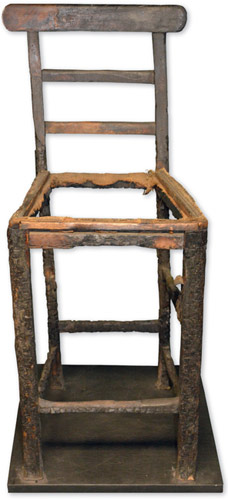

1969
Gas ring used as a weapon by Stanley Wrenn
THE HEAVY IRON gas ring was removed from a cooker and used as a murder weapon, which inflicted serious injuries to the victim’s skull.
Stanley Wrenn came from Liverpool and spent a brief period in the army before being discharged. He then drifted through a number of jobs until he reached London, in October 1969, where, aged 19, he visited Piccadilly Circus. He had nowhere to stay and was picked up by 35-year-old Colin Saunders, a chauffeur from Bromley, Kent, who had convictions for homosexual importuning. Saunders paid for a meal for him in a cafe and invited him back to stay with him in his rented room in a Victorian terraced house in Bromley. Wrenn stayed there for five or six weeks, during which time the older man apparently had regular sex with him, but the relationship soured when Wrenn discovered that he had contracted gonorrhoea from Saunders. This made Wrenn decide to kill him. His plans for the crime included going shopping for a knife, rejecting one costing 12s 6d and buying a cheaper one for 4s 6d instead. He dismantled part of the gas stove and stayed awake until 5 a.m. on 26 November 1969 to carry out a frenzied attack on the sleeping Saunders using the gas ring and knife, both of which became museum exhibits.
After stealing some money and other items, Wrenn attempted to drive the Humber car that Saunders used for a living, but collided with a Ford Consul. In exchanging details with the other driver, Wrenn went back to Saunders’ house and returned to the accident scene, claiming to have telephoned the police. Wrenn walked away, caught a train to London and spent the whole of the remainder of that day and night in the West End. Reading in the newspapers that he was wanted in connection with the murder, he approached a police officer in the street and surrendered himself into police custody. He was sentenced to life imprisonment in March 1970 and served ten years before being released in June 1980.

1933
The chair on which Walter Spatchett’s body was found